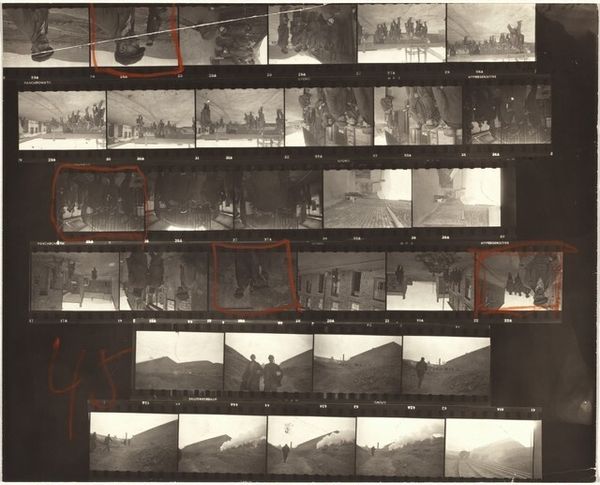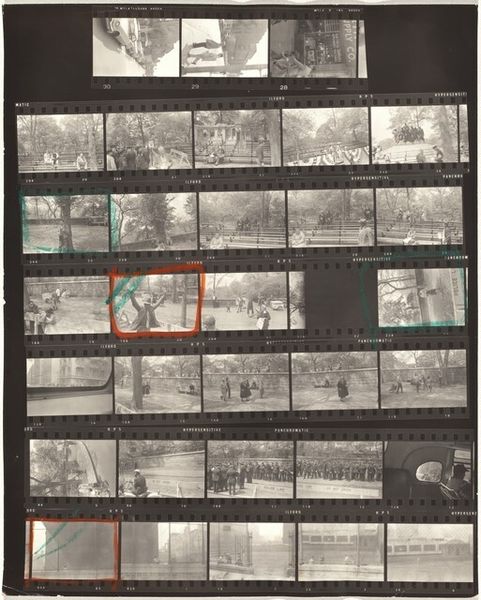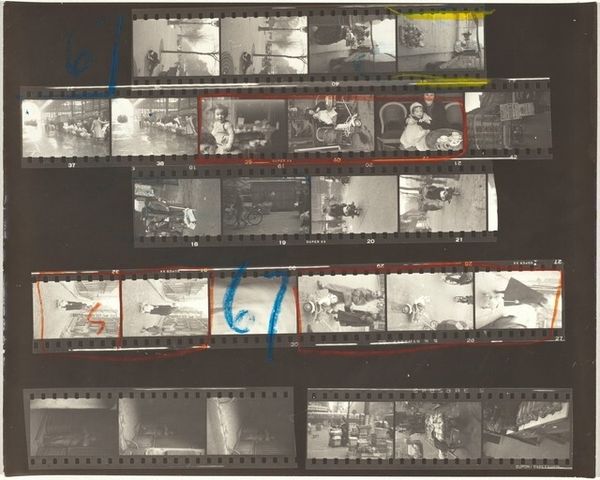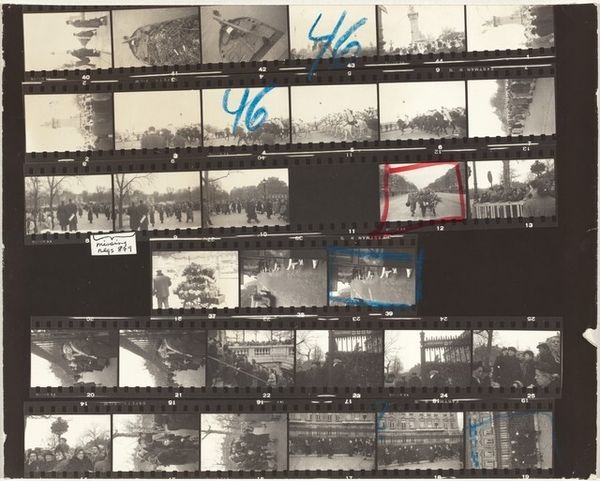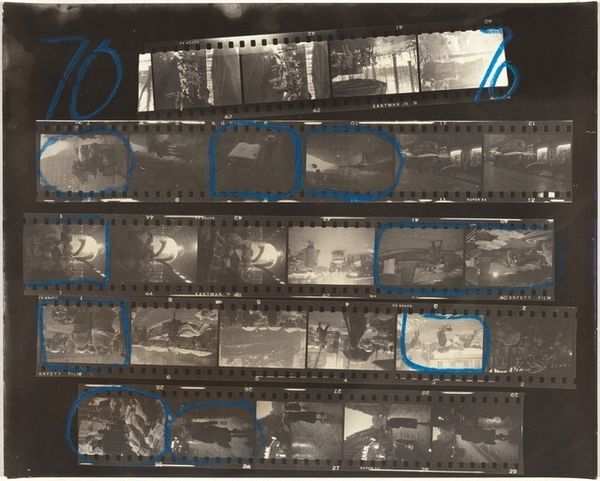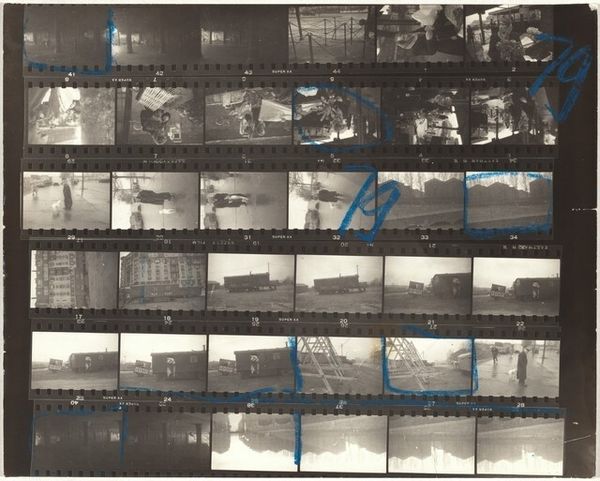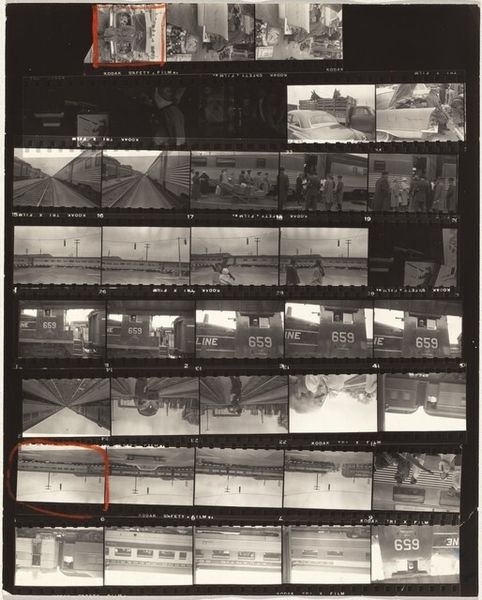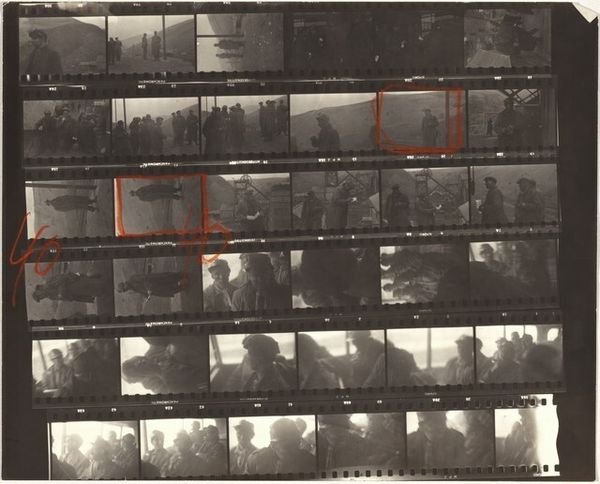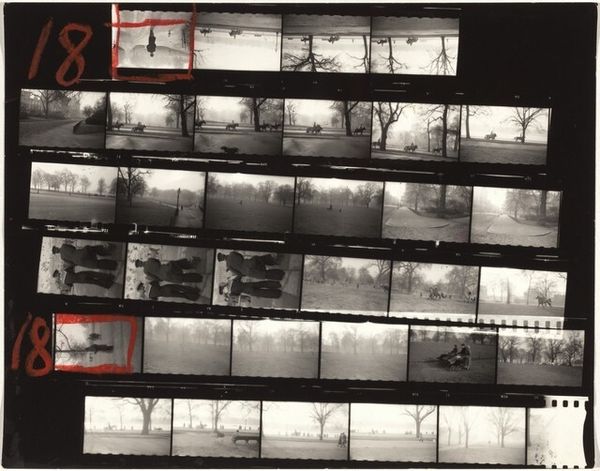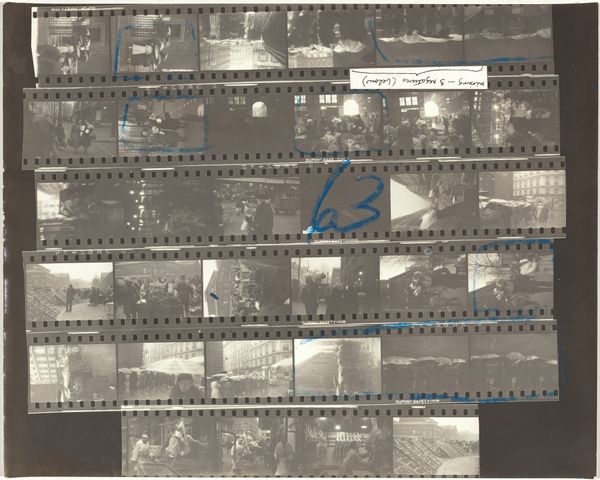
Dimensions: overall: 20.2 x 25.2 cm (7 15/16 x 9 15/16 in.)
Copyright: National Gallery of Art: CC0 1.0
Curator: Immediately striking is the contrast. This gelatin silver print, “Paris 78B,” captured by Robert Frank between 1951 and 1952, presents a grid of images, film contact sheets teeming with urban observations. Editor: It’s incredibly evocative. There's a rough, almost haphazard quality. It reminds me of a stream of consciousness, where form and surface are secondary to a raw, almost brutal capture of moments. It looks unfinished and raw. Curator: Indeed. Frank's approach to materials is important. As contact sheets, they exist between production and reproduction. We aren't presented with "finished" works of art, but the tools used to create them, a view of the process of image selection and making of meaning. Notice how the act of creation becomes part of the narrative; the artist’s hand is visible in the selection and markup of the images. Editor: Absolutely. Structurally, there's something incredibly potent in that rawness. The contrast between the sharp, precise frames of the film strip and the blurry images, creating a beautiful tension. Note the composition in individual shots, like frame 29, it appears like an old photograph from the Wild West, or the one from frame 18, where the water reflection creates a fragmented perspective of urban reality. Curator: It makes you consider the conditions of labor, as well, because silver gelatin photography was accessible and easily developed during that time, Frank democratized the art of documenting the world around him by removing traditional hierarchies and formalizing access to image-making as a tool. This suggests how cultural value and aesthetics were being reshaped by new modes of material production and dissemination. Editor: The post-impressionist qualities, however subdued, enhance its almost documentary-style realism. This combination of raw snapshots and artistic sensibilities is masterful, achieving a balance. And in frame 36, for example, that grainy street scene captures not just a moment, but also a feeling of alienation, don't you think? Curator: Precisely. Seeing these strips, marked and labeled, grants us insight into not only what he saw, but how the system allowed artists to capture, share, and reproduce images and ideas to their contemporaries. Editor: I come away with a sense of fleeting moments carefully considered and then rendered permanent on the strip, where its geometry contributes to that unique sense of captured moments in time. Curator: I am left with the weight and historical value these small slices of time share, allowing future generations insight into our present conditions.
Comments
No comments
Be the first to comment and join the conversation on the ultimate creative platform.


